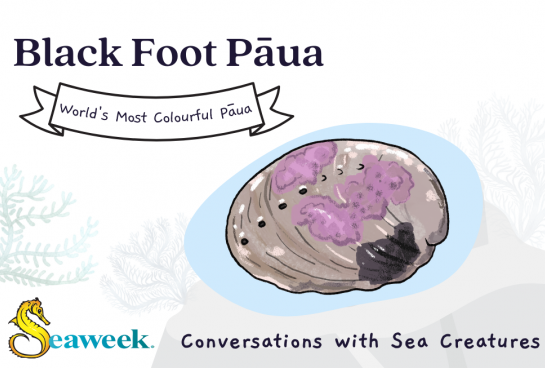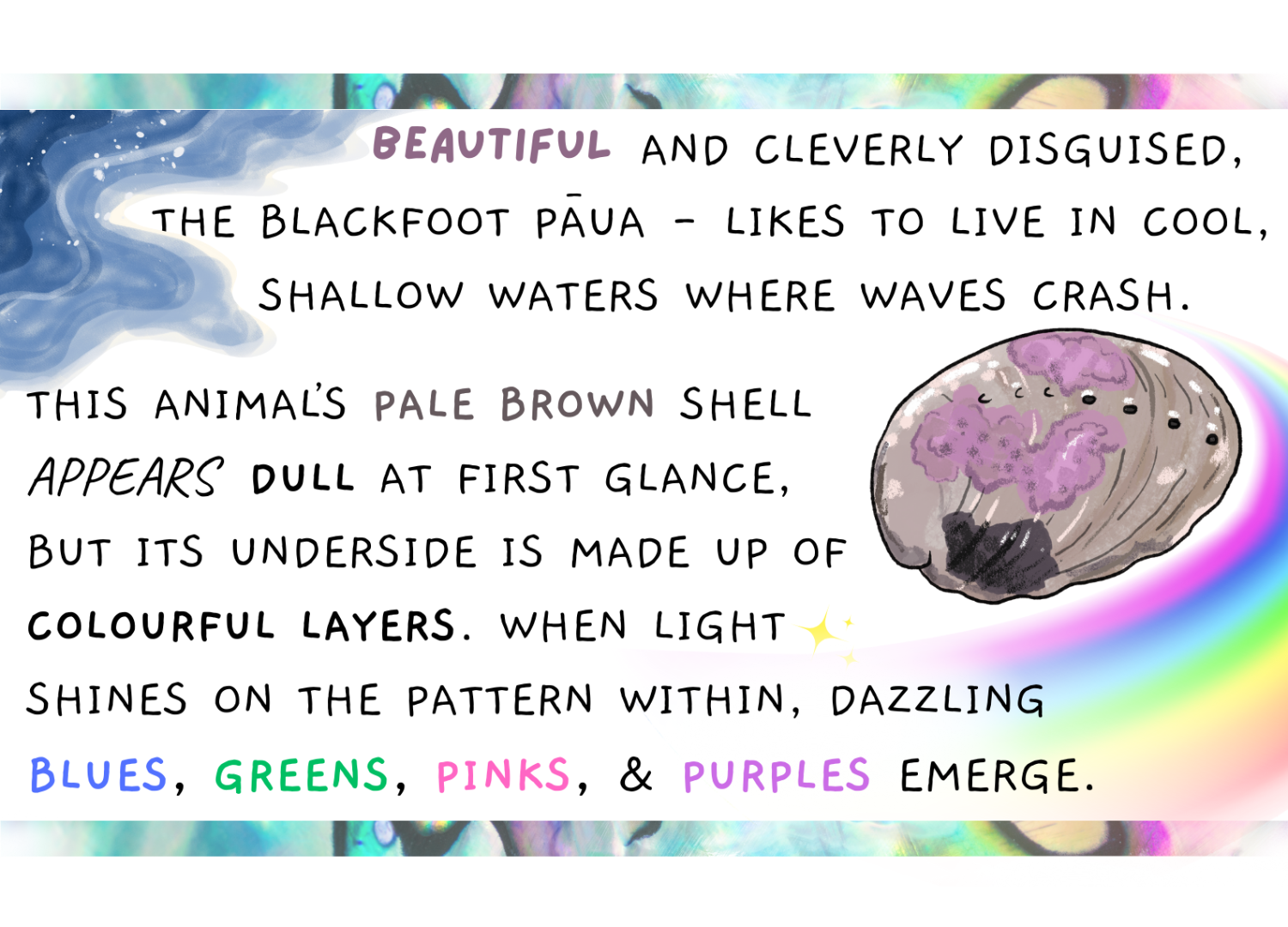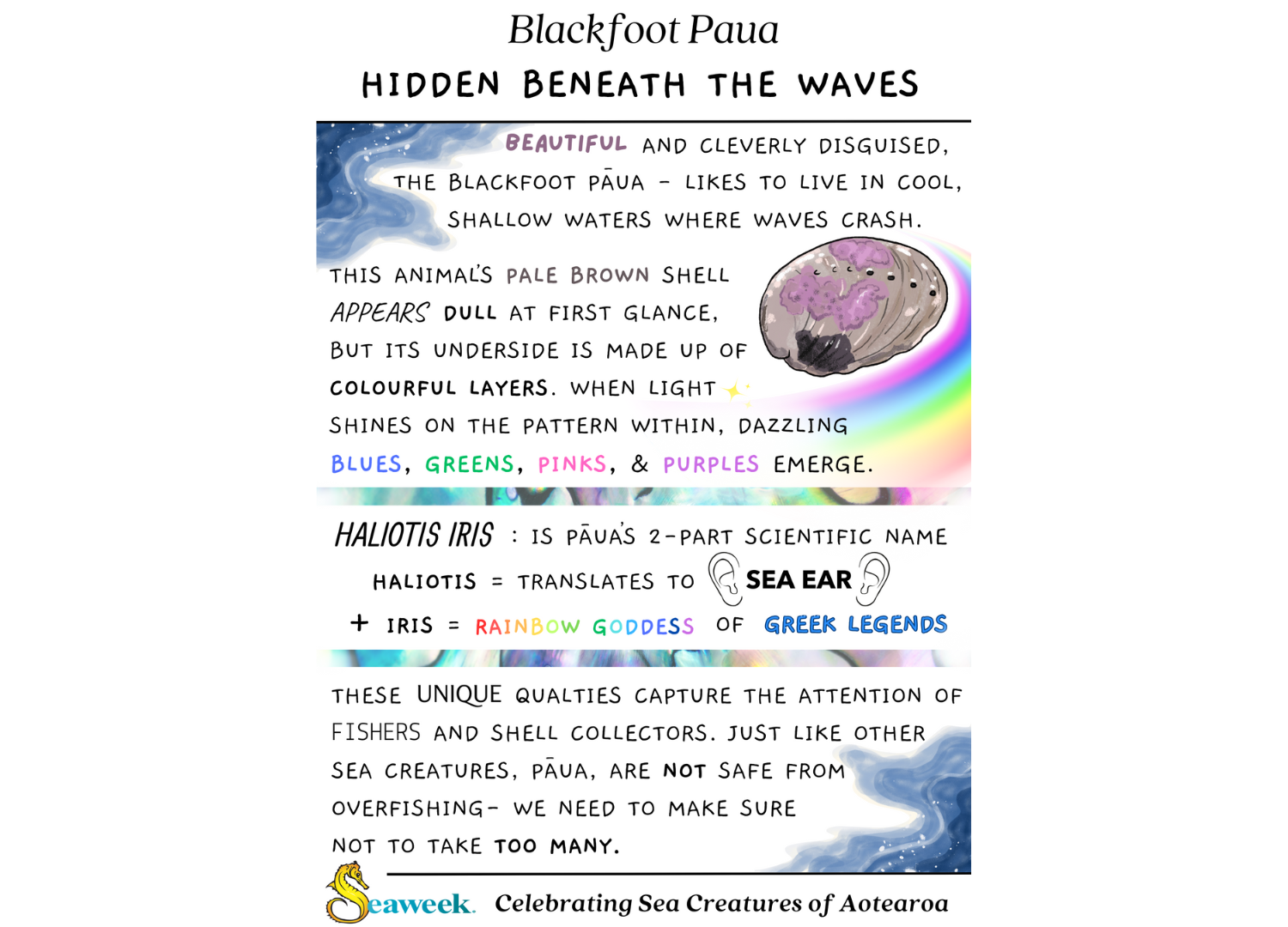
Pāua, also known as abalone, are marine snails with flattened shells which have a row of holes on their outer surface. New Zealand is home to three of the fifty species of abalone found worldwide, including the endemic, and world-renowned Black Foot Pāua.
Q. What do most people not know about you?
A. I am the only species of abalone with a rainbow interior - and Pāua are one of the world's fastest snails! At first glance, my brown shell may appear dull, but lining the inside of my shell are hard layers of colourful pearly material called nacre, or mother-of-pearl. When light reflects from these iridescent layers, dazzling blues, greens, pinks, and purples emerge. The other two abalone species found in NZ are the Yellow Foot Pāua and the White Foot Pāua. Neither of them are as colourful nor do they grow as large as the Black foot can.
Q. What do you usually eat?
A. We are herbivores, our diet consists mainly of brown and red algae. By using a muscular 'foot' (just like other sea snails) we move along the rocks into the path of strong currents. Pāua eat by partially lifting themselves off rocks to capture pieces of seaweed that drift by. We use a rough tongue made up of many of tiny teeth to pick up fleshy bits of seaweed and scrape algae off rocks.
 Q. Where do you call home?
Q. Where do you call home?
A. We tend to stay put during the day, firmly attached to the rock using our powerful muscular foot. Never really straying very far we like a range of reef habitats between the intertidal and subtidal areas. Adult Pāua can be found in up to 10-15 meters depth, often gathering on shallow reefs. Pāua are widely spread out across New Zealand, some of them live at the Three Kings Islands far in the north, the Chatham Islands to the east, and there are many more down south and all around Stewart Island.
Q. How do you reproduce?
A. As broadcast spawners, pāua release sperm and eggs through the holes in our shells. Females can produce over 5 million eggs in one breeding season! These eggs & sperm drift around in the water until they meet! Pāua larvae, only visible under a microscope, spend a week adrift before settling on the seafloor to develop shells.
Q. What are some of the natural threats you face?
My kind’s main natural predators are starfish, crabs, rock lobster, octopuses, and reef fish. Starfish are particularly scary. I’ve heard stories from my Pāua friends of several Pāua being killed by starfish who’d covered the Pāua’s breathing holes, forcing it to detach from the rock it was clinging to.
View & Download the Pāua Creature Card
Click the card below to get to the high-resolution PDF or view the full resource collection in this Google Drive folder - perfect for printing to display with the Sea Creatures of Aotearoa poster.

Related Learning Resources:
- New Zealand Marine Studies Centre 'All About Shells' guide: All About Shells PDF
- Science Learning Hub Pāua Facts: sciencelearn.org.nz/images/5017-paua
- New Zealand Marine Studies Centre Northern Rocky Shore Guide: Northern Rocky Shore Guide PDF
- New Zealand Marine Studies Centre Southern Rocky Shore Guide: Southern Rocky Shore Guide PDF
- New Zealand Marine Studies Centre 'Who Eats Who?' colouring book: Who Eats Who Educational Colouring Book PDF
.png)
Explore these links to learn more:
- Learn about the pāua lifecycle and more via the Pāua Industry Council: paua.org.nz/about
- Passionate About Pāua, New Zealand Geographic article: nzgeo.com/stories/passionate-about-paua